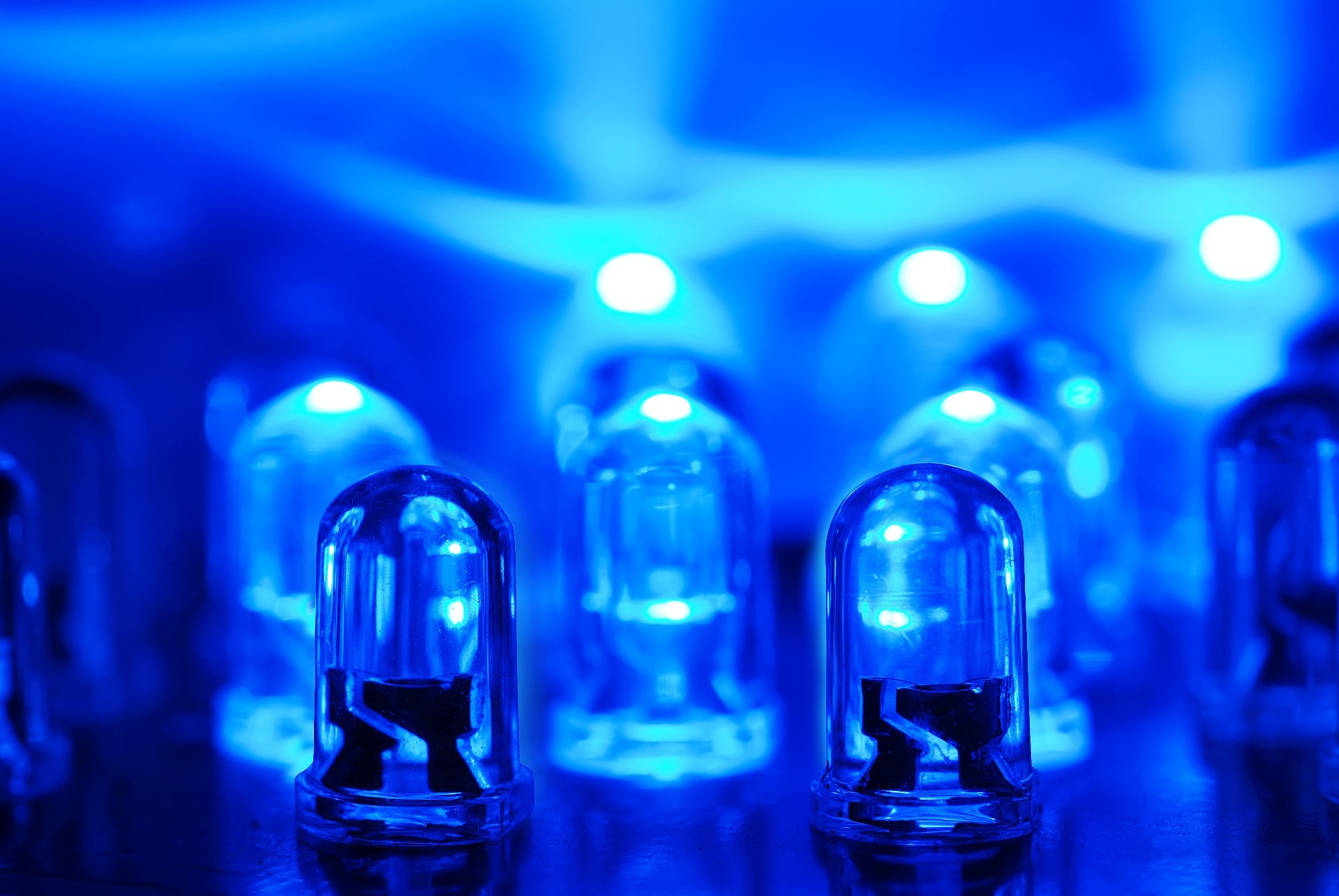Reviewed by Frances BriggsJul 17 2025
A Rutgers research team has produced an eco-friendly, highly stable, ultra-bright material for deep-blue LEDs, offering brighter, longer-lasting light.

Image Credit: demarcomedia/Shutterstock.com
Reported in Nature, the copper-iodide hybrid emitter materials can produce deep-blue light with remarkable brightness and longevity. The researchers believe this innovation could address many of the shortcomings of current blue LED technologies.
Deep-blue LEDs are at the heart of today’s energy-efficient lighting technologies. However, existing options often present issues with stability, scalability, cost, efficiency or environmental concerns due to the use of toxic components. This new copper-iodide hybrid offers a compelling solution, leveraging its nontoxicity, robustness and high performance.
Jing Li, Study Lead, Distinguished Professor, School of Arts and Sciences, Rutgers University
LEDs, light-emitting diodes, are devices that efficiently and sustainably convert power into light. They are integral in screen technology. However, conventional LEDs often rely on toxic materials, have poor stability, and can be expensive to manufacture at scale.
In an effort to develop novel materials that would enhance current blue LEDs, Li and her colleagues at Rutgers worked with scientists at Brookhaven National Laboratory and four other research teams from domestic and foreign universities.
We wanted to create new kind of materials that give very bright deep-blue light and use them to fabricate LEDs at lower cost than current blue LEDs. The new material provides an eco-friendly and stable alternative to what currently exists, addressing some of these issues and may potentially advance LED technology.
Jing Li, Study Lead, Distinguished Professor, School of Arts and Sciences, Rutgers University
According to the study, the novel hybrid copper-iodide semiconductor has several benefits over traditional LED materials. It achieves a photoluminescence quantum yield of nearly 99.6 %, meaning almost all absorbed energy is converted into light. In tests, LEDs built from the material reached a maximum external quantum efficiency (the ratio of the number of emitted photons to the number of injected electrons) of 12.6 %, one of the highest reported for solution-processed deep-blue LEDs.
These LEDs also prove durable, maintaining half their brightness for around 204 hours under typical conditions, a significant improvement over many existing options. The team was also able to fabricate larger devices while preserving efficiency, demonstrating potential for real-world applications.
To create these super-efficient, durable LEDs, the scientists developed a new manufacturing approach: dual interfacial hydrogen-bond passivation. This approach improves the LEDs' performance fourfold.
Our processing method minimizes defects that can impede the movement of electric charges at the interface of these hybrid materials. This approach could be a versatile strategy for generating high-performance LEDs.
Kun Zhu, Postdoctoral Associate, Max Planck Institute
LEDs are composed of many layers, stacked on top of each other. Each layer has a distinct purpose, such as generating light or transferring electrons and holes. But sometimes the layers don't interact precisely with their interface layers, resulting in reduced efficiency or a shorter lifespan. The technology solves these challenges by establishing hydrogen bonds between the layers, resulting in stronger connections.
Overall, this type of new material is paving the way for better, brighter and longer-lasting LEDs.
Jing Li, Study Lead, Distinguished Professor, School of Arts and Sciences, Rutgers University
Journal Reference:
Zhu, K., et al. (2025) Dual interfacial H-bonding-enhanced deep-blue hybrid copper–iodide LEDs. Nature. doi.org/10.1038/s41586-025-09257-8.